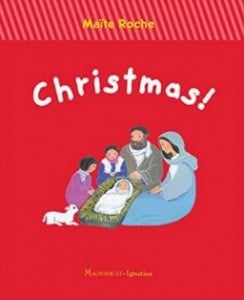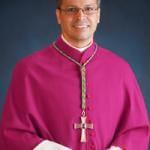 You may not know this—who thinks of St. Wenceslaus except at Christmastime?—but Friday, September 28, is his feastday.
You may not know this—who thinks of St. Wenceslaus except at Christmastime?—but Friday, September 28, is his feastday.
Wenceslaus was born in 903 to a Christian father and a pagan mother. It was his devout grandmother, St. Ludmilla, who educated Wenceslaus in the Christian faith.
After Wenceslaus’ father, Duke Wratislaw, died, his pagan mother Dragomir opposed Christianity in the country. Wenceslaus—named Duke by the Emperor Otto I—took the reins of government and placed his duchy under the protection of Germany. He welcomed Christianity, inviting German priests to establish Latin-rite churches in the area. Wenceslaus, who had taken a vow of virginity, was revered for his virtues and for his great generosity to the poor.
However, Wenceslaus’ pagan mother remained an opponent. At Dragomir’s urging, his brother Boleslaw murdered Wenceslaus and hacked his body to pieces. Wenceslaus was buried at the place of his murder; but three years later Boleslaw, having repented of his deed, had the body moved to the Church of St. Vitus in Prague.
 St. Wenceslaus Chapel—and the Seven Keys
St. Wenceslaus Chapel—and the Seven Keys
So now good St. Wenceslaus, patron of Czechoslovakia, is buried in the St. Wenceslaus Chapel at the Cathedral of St. Vitus.
The decorations in the chapel are priceless: the lower parts of the walls are decorated with more than 1,300 Bohemian gems. The joints between the jewels are covered with gold.
On the walls are Gothic frescoes depicting scenes from Wenceslaus’s life and from the Bible. The frescoes cover nearly 2,500 square feet, and King Charles IV himself is immortalized in the fresco depicting the Crucifixion of Jesus. The elaborately decorated tomb of St. Wenceslaus can be seen in the center of the chapel.
But look—over there!! In the southwest corner of the chapel is a door, behind which is a staircase leading to the Coronation chamber. There, the Crown Jewels of the Czech Republic are protected. The priceless Crown Jewels include
• The St Wenceslaus Crown of Charles IV (1347),
• The Royal Sceptre (dating from the first half of the 16th century),
• The Royal Orb (also from the first half of the 16th century), and
• The Coronation Vestments including the grand Coronation Cloak (dating from the beginning of the 17th century).
You can’t see them, though; in fact, no one can!
That’s because behind the door to the Coronation chamber is another door, this one to an iron safe. These two doors have a total of seven locks—which must be opened by seven keys. The seven keys are kept by seven different people, who must be brought together if the door is ever to be opened.
The holders of the seven keys are Czechoslovakia’s President, the Prime Minister, the Archbishop of Prague, the Chairman of the House of Deputies (the lower chamber of the Parliament), the Chairman of the Senate (the upper chamber of the Parliament), the Dean of the Metropolitan Chapter of St. Vitus Cathedral, and the Lord Mayor of Prague. These are busy people, all of them—and so the jewels are displayed rarely. So rarely, in fact, that the Coronation chamber was opened only nine times in the 20th century.
Also there at the cathedral, but stored separately in the Treasury of St. Vitus Cathedral, are the St. Wenceslaus Sword and the Coronation (Reliquary) Cross.
So that’s it, folks! All that glistening wealth, but we can’t gaze upon it! Let us, then, sing to the great Czech king whose feast we celebrate.
Merry Christmas, a little early!










